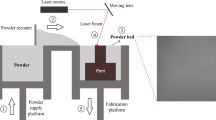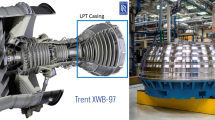Abstract
Plastic bottles are in high demand, as they are cheap to make, easy to fill and can carry most liquids. However, if the thickness of the body of the bottle is inconsistent, it cannot be used to package items containing dissolved gas. If the texture of the bottom of the bottle is incomplete, it also will be unable to be used to package these items. In this paper, we propose a concentric circle method of detecting the bottom of a bottle based on the Hough circle. This approach can be used to detect defects in the thickness of the bottle body based on the fact that the circular groove at the bottom of a plastic bottle and the gate feature have the same central position when the thickness of the body is consistent. Our defect detection method for the texture at the bottom of the bottle is based on the special wing flaps at the bottom of plastic bottles, which have left/right and up/down symmetry features when the texture is correct. The proposed method uses a deep learning image recognition framework for recognition of autonomous features and to detect defects in the texture at the bottom of plastic bottles. The proposed defect detection method for the bottle body has an accuracy of 92.9%, whereas the defect detection method for the bottom of the bottle has an accuracy of 96.5%.












Similar content being viewed by others
Data availability
The data that support the findings of this study are available from the corresponding author upon reasonable request.
References
Caiazzo B, Murino T, Petrillo A, Piccirillo G, Santini S (2022) An IoT-based and cloud-assisted AI-driven monitoring platform for smart manufacturing: design architecture and experimental validation. J Manuf Technol Manag ahead-of-print No. ahead-of-print. https://doi.org/10.1108/JMTM-02-2022-0092
Hsieh YC, Lin HF (2020) Energy-saving manufacturing technology for heating of injection stretching blow molding machine. Sens Mater 32(8):2755–2770
Hsieh PC, Su GL, Lin YT, Lin WB (2022) Intelligent Adjustment of Temperature Control Parameters Based on Deep Reinforcement Learning for Stretch Blow Molding Machine. In: 2022 25th International Conference on Mechatronics Technology (ICMT). IEEE, Kaohsiung, Taiwan, pp 1–4. https://doi.org/10.1109/ICMT56556.2022.9997684
Bałdowska-Witos P, Tomporowski A, Kruszelnicka W, Idzikowski A, Markowska K (2019) Evaluation of the quality of the production process PET bottles. Confer Qual Prod Improv CQPI 1(1):495–502. https://doi.org/10.2478/cqpi-2019-0067
Scaccabarozzi D, Saggin B, Cornolti L, Tarabini M, Giberti H (2016) Contactless measurement of PET bottles' thickness. In: 14th IMEKO TC10 Workshop Technical Diagnostics New Perspectives in Measurements, Tools and Techniques for system’s reliability, maintainability and safety. IMEKO-International Measurement Federation Secretariat, Milan, Italy, pp 312–316
Czimmermann T, Ciuti G, Milazzo M, Chiurazzi M, Roccella S, Oddo CM, Dario P (2020) Visual-based defect detection and classification approaches for industrial applications—a survey. Sensors 20(5):1459
Tsai MF, Chu YC, Li MH, Chen LW (2020) Smart machinery monitoring system with reduced information transmission and fault prediction methods using industrial internet of things. Mathematics 9(1):3
Fu L, Zhang S, Gong Y, Huang Q (2019) Medicine Glass Bottle Defect Detection Based on Machine Vision. In: 2019 Chinese Control And Decision Conference (CCDC). IEEE, Nanchang, China, pp 5681–5685. https://doi.org/10.1109/CCDC.2019.8832688
Tarabini M, Cornolti L, Saggin B, Giberti H, Scaccabarozzi D (2016) Non-Contact Techniques for the Quality Analysis of PET Bottles. In: 14th IMEKO TC10 Workshop Technical Diagnostics New Perspectives in Measurements, Tools and Techniques for system’s reliability, maintainability and safety. IMEKO-International Measurement Federation Secretariat, Milan, Italy, pp 175–180
Tsai DM, Fan SKS, Chou YH (2021) Auto-annotated deep segmentation for surface defect detection. IEEE Trans Instrum Meas 70:1–10
Chen Y, Ding Y, Zhao F, Zhang E, Wu Z, Shao L (2021) Surface defect detection methods for industrial products: a review. Appl Sci 11(16):7657
Saberironaghi A, Ren J, El-Gindy M (2023) Defect detection methods for industrial products using deep learning techniques: a review. Algorithms 16(2):95
Liu B, Wu S, Zou S (2010) Automatic detection technology of surface defects on plastic products based on machine vision. In: 2010 International Conference on Mechanic Automation and Control Engineering. IEE, Wuhan, pp 2213–2216. https://doi.org/10.1109/MACE.2010.5536470
Rizal MF, Sarno R, Sabilla SI (2020) Canny Edge and Hough Circle Transformation for Detecting Computer Answer Sheets. In: 2020 International Seminar on Application for Technology of Information and Communication (iSemantic). IEEE, Semarang, Indonesia, pp 346–352. https://doi.org/10.1109/iSemantic50169.2020.9234208
Ge-Zhang, S., Liu, H., Song, M., Wang, Y., Yang, H., Fan, H., ..., & Mu, L. (2022). Advances in polyethylene terephthalate beverage bottle optimization: a mini review. Polymers, 14(16), 3364.
Boikov A, Payor V, Savelev R, Kolesnikov A (2021) Synthetic data generation for steel defect detection and classification using deep learning. Symmetry 13(7):1176
Liang Q, Zhu W, Sun W, Yu Z, Wang Y, Zhang D (2019) In-line inspection solution for codes on complex backgrounds for the plastic container industry. Measurement 148:106965
Funding
The Industrial Development Bureau, Ministry of Economic Affairs, Chumpower Machinery Corporation and National Science and Technology Council of Taiwan supported this project under grant number MOST 111-2221-E-239-024.
Author information
Authors and Affiliations
Contributions
Supervision, Ming-Fong Tsai; writing — original draft, Ming-Fong Tsai, Bo-Cheng Liu and Shu-Lin Hsieh; all the authors have read and agreed to the published version of the manuscript.
Corresponding author
Ethics declarations
Institutional review board
This article does not contain any studies with human participants or animals performed by any of the authors.
Informed consent
Not applicable.
Conflict of interest
The authors declare that they have no conflict of interest.
Additional information
Publisher’s note
Springer Nature remains neutral with regard to jurisdictional claims in published maps and institutional affiliations.
Rights and permissions
Springer Nature or its licensor (e.g. a society or other partner) holds exclusive rights to this article under a publishing agreement with the author(s) or other rightsholder(s); author self-archiving of the accepted manuscript version of this article is solely governed by the terms of such publishing agreement and applicable law.
About this article
Cite this article
Tsai, MF., Liu, BC. & Hsieh, SL. Body thickness and bottom defect detection methods for products made by bottle blowing machines to meet quality requirements. Int J Adv Manuf Technol 130, 541–551 (2024). https://doi.org/10.1007/s00170-023-12693-3
Received:
Accepted:
Published:
Issue Date:
DOI: https://doi.org/10.1007/s00170-023-12693-3




